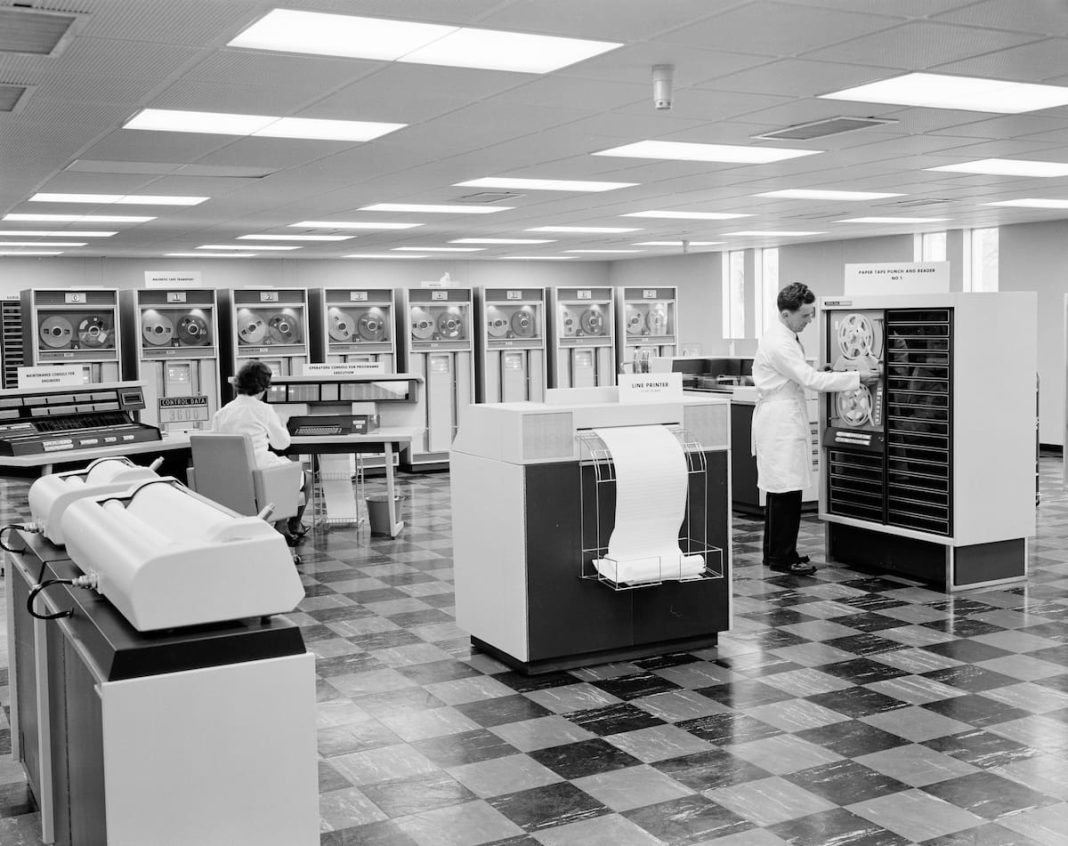With all the recent paranoia about artificial intelligence (AI) – such as panic over job-stealing computers taking over the world – Canberra was way ahead of the curve and in 1974, hosted an AI symposium.
Before Alexa and Siri were even a twinkle in the eye, Canberra’s CSIRO was discussing “AI and psychology”, and “AI and the real world”, with four overseas speakers. Remember, this is 1974 when flares and mood rings were around.
While Toshiba was releasing its first floppy disc drive, Canberra channelled 2001: A Space Odyssey, inviting computer science experts from the US, Canada and India to explore pattern and voice recognition. While the capabilities were basic, the concept was cutting-edge at the time.
Not only was Canberra exploring sci-fi concepts in the ‘70s, but in 1964, the CSIRO owned the most powerful computer in the country. Dubbed ‘Control Data 3600’, the supercomputer cost 1.5 million pounds (about $500 million in today’s money) and took up the entire ground floor of CSIRO building 401A.
This “modern” computer has just turned 60 and today, it’s a dinosaur. Not exactly a hand-held device, Control Data 3600 consisted of eight magnetic tape drives, a line printer and a paper tape device. It required an army of 10 research workers, eight numerical analysts and programmers, and eight people to create ‘punch cards’ (for Gen Z, think old-fashioned apps).
The old computer room still exists, albeit now furnished with modern tech. It sits in a non-descript building at the base of Black Mountain, with a stream flowing beneath it.
Someone who remembers its futuristic heyday is CSIRO retirement fellow Robert Bell, who was a vacation student there in 1967.
“It was a matter of getting punch cards and having them air freighted to Canberra to run the program,” Mr Bell said. “The output went back to magnetic tape and then back to printout. If you were fortunate, you’d have a one-day turnaround. When it was reading punch cards, it did nothing else. When it was printing on the printer, it did nothing else. The machine did one thing at a time.”
Again, Canberra led the way by inventing DAD, an acronym for Drums and Display, which enabled higher output (kind of like when we got Broadband in the 2000s). DAD was so good it was exported to the US.
“When they built DAD, they could actually interact with the machine,” Robert said. “They had visual displays so they could view things and they could store data on the machine. That was the key breakthrough, this was pioneering work.”
Canberra was like Silicon Valley. While Sydney, Melbourne and Adelaide made do with Data 3200 computers, they would become overloaded, so work had to be transferred to Canberra.
Here’s some number-crunching: Canberra’s supercomputer was able to transfer 120,000 characters per second. It had a core store of memory of 32,768 words with an access time of 6.7 micro-seconds. Additions could be done at a rate of 500,000 per second and multiplications at 250,000 per second.
In the ‘60s, this was life-changing for Canberra’s researchers.
“Its purpose was primarily to analyse masses of data and do simulations in the world and understand the world,” Robert said.
The operator manual is long gone but Robert remembers that the supercomputer got pretty hot and once, lightning struck a cable on Black Mountain and caused damage. In the ‘60s, there was no ‘Control-Alt-Delete’ quick fix. You just had to search the hardware to find the fault.



